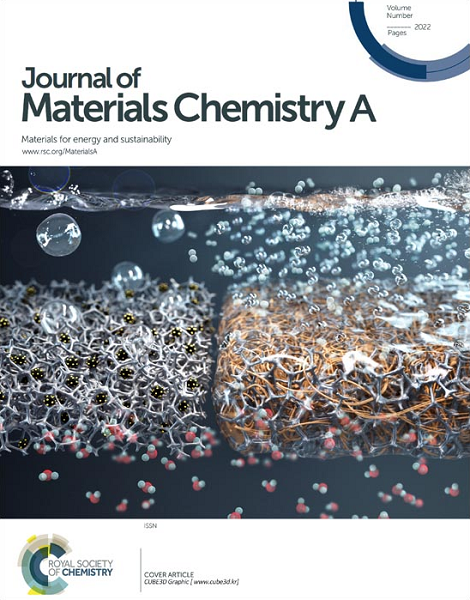Microdroplet self-driven transport on the surface with a bionic coupled cone-gradient groove
IF 10.7
2区 材料科学
Q1 CHEMISTRY, PHYSICAL
引用次数: 0
Abstract
Due to the illegal discharge of organic wastewater, the amount of oil-containing water is increasing. Therefore, how to quickly and effectively carry out oil–water separation has become an urgent problem. Inspired by the gutter structure of ginkgo leaves and the conical structure of pine needles, we fabricated a bionic coupled cone-gradient groove (BCGG) using micro–nano precision 3D printing technology. Under the combined effect of Laplace pressure and capillary force, the surface can perform oil–water separation spontaneously, efficiently and rapidly, with the maximum transport speed reaching 55.2 mm s−1, which is approximately 11 times that of the traditional conical structure. The structure can perform anti-gravity transport of oil droplets in different environments such as gas phase, liquid phase and gas–liquid phase, while maintaining excellent transport performance for large volumes of oil droplets. This study has certain reference significance for microdroplet manipulation, liquid separation and transportation.

微液滴自驱动表面输运的仿生耦合锥形梯度槽
由于有机废水的非法排放,含油废水的数量正在增加。因此,如何快速有效地进行油水分离已成为一个亟待解决的问题。受银杏叶沟槽结构和松针圆锥形结构的启发,我们利用微纳精密3D打印技术制作了仿生耦合锥形梯度槽(BCGG)。在拉普拉斯压力和毛细力的共同作用下,表面能够自发、高效、快速地进行油水分离,最大输送速度可达55.2 mm s−1,约为传统锥形结构的11倍。该结构可以在气相、液相、气液相等不同环境下对油滴进行反重力输运,同时对大体积油滴保持优异的输运性能。本研究对微滴操作、液体分离和输送具有一定的参考意义。
本文章由计算机程序翻译,如有差异,请以英文原文为准。
求助全文
约1分钟内获得全文
求助全文
来源期刊

Journal of Materials Chemistry A
CHEMISTRY, PHYSICAL-ENERGY & FUELS
CiteScore
19.50
自引率
5.00%
发文量
1892
审稿时长
1.5 months
期刊介绍:
The Journal of Materials Chemistry A, B & C covers a wide range of high-quality studies in the field of materials chemistry, with each section focusing on specific applications of the materials studied. Journal of Materials Chemistry A emphasizes applications in energy and sustainability, including topics such as artificial photosynthesis, batteries, and fuel cells. Journal of Materials Chemistry B focuses on applications in biology and medicine, while Journal of Materials Chemistry C covers applications in optical, magnetic, and electronic devices. Example topic areas within the scope of Journal of Materials Chemistry A include catalysis, green/sustainable materials, sensors, and water treatment, among others.
 求助内容:
求助内容: 应助结果提醒方式:
应助结果提醒方式:


